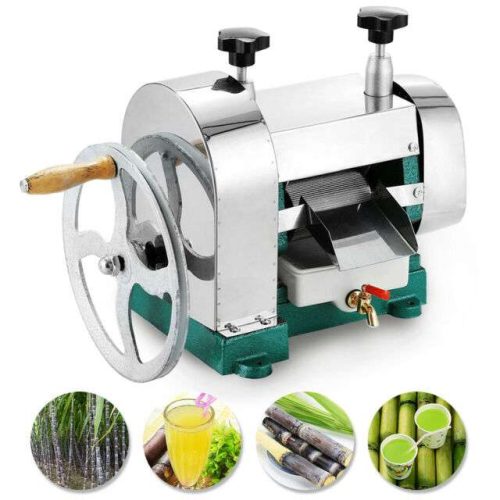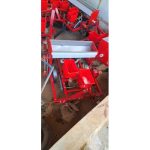2 Rows Maize Planter
A 2-row maize planter is an essential tool for maize farmers looking to improve planting efficiency, crop uniformity, and yields. Its design ensures accurate planting while reducing labor costs, making it an excellent investment for farms of varying sizes.
Description
A 2 Rows Maize Planter is a farming implement designed to plant maize (corn) seeds in two rows simultaneously. It helps improve efficiency by ensuring accurate seed placement, proper spacing, and consistent depth, leading to better crop yields. The planter is typically mounted on a tractor and operates mechanically or through hydraulic systems.
Key Features & Components of a 2 Rows Maize Planter:
Frame:
- The planter has a durable metal frame that supports all components, providing stability during operation.
- It usually comes with a 3-point linkage system, making it easy to attach to a tractor.
Seed Hopper:
- The planter has two seed hoppers, one for each row, which hold the maize seeds. These hoppers can have different capacities, typically ranging from 20 to 50 kg.
- Some advanced models may have a seed level indicator to show when it’s time to refill.
Seed Metering Mechanism:
- This mechanism ensures accurate seed dispensing, releasing seeds at a controlled rate for uniform planting.
- It could be plate-based (mechanical) or vacuum-based (pneumatic).
- The plate-based mechanism uses seed plates with holes matching the size of the seeds, ensuring one seed drops at a time.
- Pneumatic planters use air pressure to control seed release, offering even greater accuracy.
The Seed Tubes:
- Once the seed is metered, it travels down seed tubes to the planting furrow. These tubes are designed to minimize seed bounce, ensuring proper placement in the soil.
Furrow Openers:
- These are sharp discs or tines that create a furrow (a shallow trench) in the soil for seed placement. They work by cutting through the soil to the desired depth.
- Some planters allow you to adjust the depth, depending on soil conditions and seed type.
Press Wheels:
- After seeds are placed in the furrow, press wheels follow behind to press the soil over the seeds, ensuring good soil-to-seed contact. This helps with moisture retention and proper germination.
Fertilizer Attachment (Optional):
- Some 2-row planters come with fertilizer hoppers that can apply fertilizer while planting. This helps deliver nutrients directly to the seeds, promoting early growth.
Functions & Advantages:
Precise Seed Placement:
- The planter ensures that maize seeds are planted at uniform depth and spacing, which is critical for optimal growth and yield. Proper spacing prevents overcrowding and allows each plant to access adequate nutrients, sunlight, and water.
Row Spacing:
- The planter usually allows for adjustable row spacing, making it flexible for different farming practices. Typical maize row spacing ranges from 60 cm to 75 cm, but this can vary depending on the variety and field conditions.
Time-Saving:
- A 2-row planter increases the speed of planting compared to manual seeding or single-row planters, making it more efficient for small- to medium-sized farms.
Higher Germination Rates:
- This results in more uniform plant growth and higher yields.
Seed and Fertilizer Economy:
- Accurate seed metering reduces seed wastage. Additionally, if equipped with a fertilizer hopper, the planter delivers precise amounts of fertilizer, reducing waste and promoting healthy plant growth.
Types of 2 Rows Maize Planter:
Mechanical Planters:
- These planters rely on mechanical seed plates or rollers to meter the seeds. They are typically more affordable but may not offer the same level of accuracy as pneumatic models.
Pneumatic Planters:
- Pneumatic planters use air pressure to control seed placement, offering greater precision. They are more expensive but suitable for farmers looking for high accuracy and uniformity.
Maintenance:
1. Clean the Seed Plates/Discs:
- Regularly clean and inspect the seed plates or pneumatic system for blockages or wear. This ensures smooth operation and accurate seed delivery.
2. Lubrication:
3. Inspect Hoppers:
- Check seed and fertilizer hoppers for damage or wear. Make sure they are clean before adding seeds or fertilizers to avoid contamination.
4. Check Press Wheels:
- Ensure that the press wheels are in good condition and properly aligned to provide uniform pressure on the soil.
Applications:
- Small to Medium Farms: Ideal for farmers with small to medium land holdings looking to mechanize their maize planting processes.
- Conservation Tillage: Some models are compatible with conservation tillage systems, which involve minimal soil disturbance.
Additional information
| Weight | 850 kg |
|---|







Reviews
There are no reviews yet.